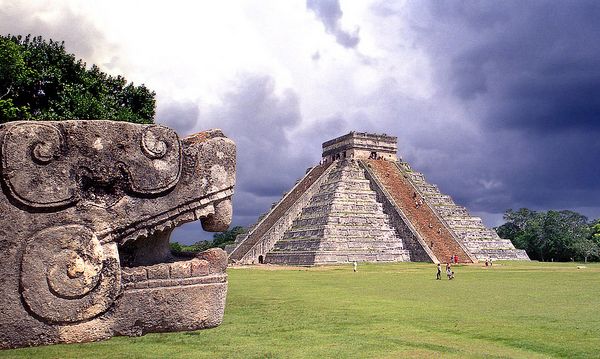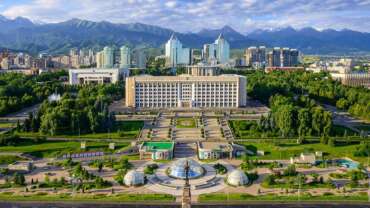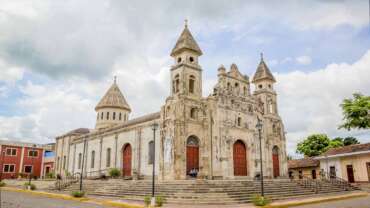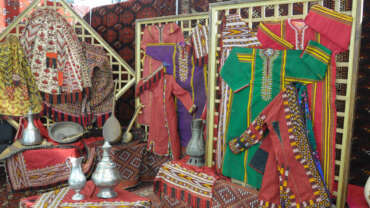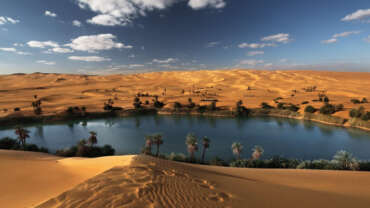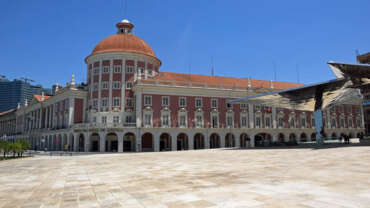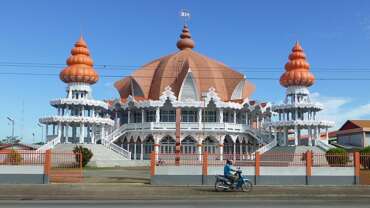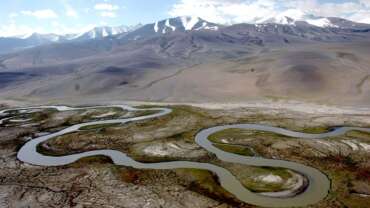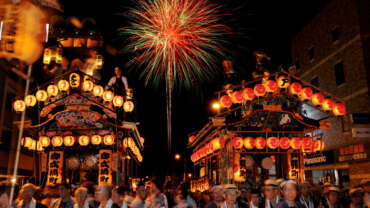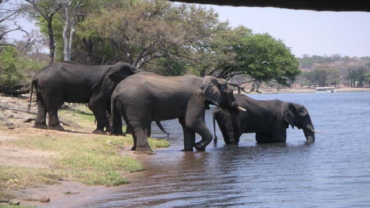Mexico - Live it to Believe it!
Mexico, officially the United Mexican States, is a country in the southern portion of North America. It is bordered to the north by the United States; to the south and west by the Pacific Ocean; to the southeast by Guatemala, Belize, and the Caribbean Sea; and to the east by the Gulf of Mexico.
Mexico means the navel of the moon. The official name is “Estados Unidos Mexicanos” in accordance with the provisions of the 1917 Constitution. But the country is known as Mexico, a word whose origin comes from the “Nahuatl” words “metztli”, which means moon; “xictli”, navel or center, which translates as the navel of the moon.
Mexico is one of the countries with the most World Heritage sites. In 2020, Mexico ranked seventh among the countries with the highest number of World Heritage sites. The largest pyramid in the world is in Mexico.
“Tlachihualtépetl”, also known as the Cholula Pyramid, is a 400-meter pyramidal basement and is hidden under a mountain. Its construction dates from the year 300 BC. This wonder is part of the archaeological zone of Cholula, in Puebla.
History of Mexico
Pre-Columbian Mexico
It is assumed that the first inhabitants of Middle America were early American Indians, of Asian derivation, who migrated into the area at some time during the final stage of the Pleistocene Epoch. The date of their arrival in central Mexico remains speculative. The assertions of some archaeologists and linguists that early humans resided in Mexico some 30,000 to 40,000 years ago, before developing technology for big-game hunting, are rejected by most scholars. More generally accepted claims for early settlers in Mexico pertain to a somewhat later period and to hunters of large herd animals such as the mammoth. Human artifacts and mammoth bones dated to approximately 9000 BC have been found together in the same geologic strata in the Valley of Mexico at Santa Isabel Ixtapan.
With the increased dryness and change of fauna following the glacial retreat of the last Wisconsin substage (approximately 7500 BC), the inhabitants of Middle America were forced to turn from big-game hunting to other means of subsistence, such as the hunting of small game and the collecting of wild food plants. This mode of existence is best seen in the archaeological discoveries made in the Tehuacán Valley of Puebla.
In the earlier El Riego (7000–5000 BC) and Coxcatlán (5000–3400 BC) phases of this sequence, the inhabitants of the Tehuacán Valley were probably seasonal nomads who divided their time between small hunting encampments and larger temporary villages, which were used as bases for collecting plants such as various grasses and maguey and cactus fruits. Corn (maize; Zea mays), a wild grass, first came under cultivation at this time, probably as early as 5000 BC, and over the centuries farmers learned to produce hybrids to increase the size of the corn kernels. Avocados, chili peppers, amaranth, zapotes, tepary beans, and squashes were also primitive cultigens. During the Abejas phase (3400–2300 BC), use of cultivated plants increased at the expense of wild plants and, probably, at the expense of hunting. In addition, pumpkins and the common bean were introduced. Toward the end of the phase, more-permanent settlements seem to have developed as pit-house villages. Pottery was being produced as early as the Purron phase (2300–1500 BC).
Early, Middle, and Late Formative periods
By 2000 BC some village communities in Middle America were sustained largely or wholly by agriculture. Most of these villages were located in southern Mesoamerica, but archaeological finds in Cerro Juanaquena, Chihuahua, not far from the present-day U.S. border, suggest early agricultural development in northern Mexico as well. During the Early Formative Period numerous edible plants were improved by hybridization and more-sophisticated cultivation techniques.
The Middle Formative Period was a time of transition from simple agricultural village to more-complex societies organized around politico-religious capitals, possibly including densely populated towns. Although these and other societies must have built numerous structures of wood, reeds, and thatch—materials widely available in the surrounding forests—these have long since rotted away under the tropical sun. As a result, archaeologists have tended to focus on stone and earth-filled structures that have withstood the ravages of time. The first large stone-built ceremonial centres and the first monumental stone sculpture date from the Middle Formative Period, about 1000 BC in southern Veracruz and Tabasco. The sites in question are San Lorenzo and La Venta, both of which evolved from small farming villages to impressive urban centres. They are the two prime sites of Olmec art, which exhibited consummate control of both full round and bas-relief forms. The Olmec artists made great stone heads, altars, large mosaic masks, and stelae, and they also worked as lapidaries in exquisite jade figurines and other small objects. They often depicted human faces, although many of these had jaguar mouths and nostrils. Olmec stylistic influence reached to Oaxaca, Chiapas, Guatemala, El Salvador, and the Valley of Mexico.
The Late Formative Period saw the spread of complex societies throughout much of Middle America. Hieroglyphics and complex calendrical calculations appeared. These elements of civilization are first noted in association with the Tres Zapotes, Izapan, and early Oaxacan art styles. The true city or urban centre also came into being during this period. One of the earliest manifestations of densely settled city life occurred in the Valley of Mexico at Teotihuacán, which eventually covered an area of some 8 square miles (20 square km) and housed between 125,000 and 200,000 residents. The monumental ruins of the city, including the enormous Pyramid of the Sun and the 130-foot- (40-metre-) wide Avenue of the Dead, remain a focus of archaeological study and a major tourist draw.
People of Mexico
Mexico’s population is composed of many ethnic groups, including indigenous American Indians (Amerindians), who account for less than one-tenth of the total. Generally speaking, the mixture of indigenous and European peoples has produced the largest segment of the population today—mestizos, who account for about three-fifths of the total—via a complex blending of ethnic traditions and perceived ancestry. Mexicans of European heritage (“whites”) are a significant component of the other ethnic groups who constitute the remainder of the population. Although myths of “racial biology” have been discredited by social scientists, “racial identity” remains a powerful social construct in Mexico, as in the United States and elsewhere, and many Mexicans have referred to their heritage and raza (“race”) with a measure of pride—particularly on October 12, the Día de la Raza (“Race Day”)—whether they conceive of themselves as indigenous, mestizo, or European. Their identities as members of ethnic groups may be additionally complicated, given that ethnicity is a function of cultural patterns and traditions as varied as a group’s sense of linguistic, religious, and socioeconomic history.
At the time Europeans arrived in the early 1500s, what is now Mexico was inhabited by peoples who are thought to have migrated into the Americas from Asia tens of thousands of years ago by crossing a former land bridge in the Bering Strait. After their arrival in Mexico, many groups developed unique cultural traits. Highly organized civilizations occupied various parts of Mexico for at least 2,000 years before European contact.
By the early 16th century most people lived in the Mesa Central under the general rule of the Aztec empire, but many separate cultural groups also thrived in this region, among them speakers of the Tarascan, Otomí, and Nahuatl languages. Outside the Mesa Central were numerous other cultural groups, such as the Maya of the Yucatán and the Mixtec and Zapotec of Oaxaca. The splendid Aztec cities of the Mesa Central were marvels of architectural design, irrigation technology, and social organization. Spectacular Mayan ruins in the Yucatán give evidence of widespread urbanization and intensive agricultural productivity dating back more than 2,000 years. In many ways the indigenous civilizations of Mexico were more advanced than that of their Spanish conquerors.
Following the arrival of Europeans, intermarriage resulted in an increasing mestizo population that over the centuries became the dominant ethnic group in Mexico. Northern Mexico is overwhelmingly mestizo in both urban and rural areas. Mexicans of European descent, including those who immigrated during the 20th century, are largely concentrated in urban areas, especially Mexico City, and in the West. As is the case throughout Latin America, people of European descent and other lighter-skinned Mexicans dominate the wealthiest echelons of Mexican society, owing to racial discrimination and centuries of economic, political, and social policies favouring the inheritance of wealth. In contrast, mestizos occupy a wide range of social and economic positions, while indigenous Indians are predominantly poor and working-class, often industrial and service workers in cities and peasants in the countryside. Notwithstanding such generalizations, some individuals manage to improve their lot through education, political action, or entrepreneurship.
There are several areas where indigenous peoples are still the dominant population group. Maya speakers constitute the majority in the rural Yucatán and the Chiapas Highlands. In the Oaxaca Valley and in remoter parts of the Sierra Madre del Sur, indigenous (primarily Zapotec) communities abound. Despite their decreasing numbers, enclaves of American Indians also are still significant in isolated mountain areas on the eastern margin of the Mesa Central.
Languages
Spanish, which is the official national language and the language of instruction in schools, is spoken by the vast majority of the population. Fewer than one-tenth of American Indians speak an indigenous language. There are, however, more than 50 indigenous languages spoken by more than 100,000 people, including Maya in the Yucatán; Huastec in northern Veracruz; Nahua, Tarascan, Totonac, Otomí, and Mazahua mainly on the Mesa Central; Zapotec, Mixtec, and Mazatec in Oaxaca; and Tzeltal and Tzotzil in Chiapas. Many public and private schools offer instruction in English as a second language.
Religion
There is no official religion in Mexico, as the constitution guarantees separation of church and state. However, more than four-fifths of the population are at least nominally affiliated with Roman Catholicism. The Basilica of Guadalupe, the shrine of Our Lady of Guadalupe, Mexico’s patron saint, is located in Mexico City and is the site of annual pilgrimage for hundreds of thousands of people, many of them peasants. Throughout Mexico are thousands of Catholic churches, convents, pilgrimage sites, and shrines.
Cultural Life of Mexico
Cultural milieu
Mexican society is ethnically and regionally diverse, and there are sharp socioeconomic divisions within the population. Many rural communities maintain strong allegiances to regions, often referred to as patrias chicas (“small homelands”), which help to perpetuate cultural diversity. The large number of indigenous languages and customs, especially in the south, also accentuates cultural differences. However, indigenismo, or pride in the indigenous heritage, has been a major unifying theme of the country since the 1930s. In attempts to unite the country culturally by identifying a uniquely Mexican culture, the government has sometimes supported indigenous folk arts and crafts as well as the European-inspired classical arts.
Daily life and social customs
Daily life in Mexico varies dramatically according to socioeconomic level, gender, ethnicity and racial perceptions, regional characteristics, rural-versus-urban differences, and other social and cultural factors. A Mayan peasant in the forests of the Yucatán leads an existence utterly different from that of a successful lawyer in Toluca or a lower-middle-class worker in Monterrey. Further differences are exacerbated by the large number of Mexican expatriates in the United States who eventually return, either for short-term visits or permanently, and in turn import many “American” ways of life. Such differences give Mexico much of its character and colour, but they also present the country with stubborn challenges. But, notwithstanding the vast range of lifestyles and class-based opportunities in Mexico, some similarities are widely shared.
Mexico City - The Capital of Mexico
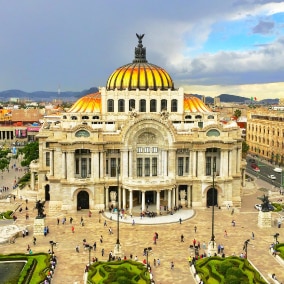 The capital of the country is one of the favorite destinations for thousands of tourists. Its cosmopolitan personality, cultural, gastronomical and entertainment options makes Mexico City a megalopolis like few others. The greatness of the also known as CDMX is visible not only in its history, but its extension. That´s why touring by metro, walking or even by bike, is all possible.
The capital of the country is one of the favorite destinations for thousands of tourists. Its cosmopolitan personality, cultural, gastronomical and entertainment options makes Mexico City a megalopolis like few others. The greatness of the also known as CDMX is visible not only in its history, but its extension. That´s why touring by metro, walking or even by bike, is all possible.
One of the advantages of Mexico City is the pleasant weather throughout most of the year, with cool nights and sunny days allowing you to enjoy walks through its museums, monuments, parks and town squares. Also make sure to take advantage of these sunny days to capture incredible photographs. Moving from north to south is achievable by roads such as Avenida de los Insurgentes. So feel free to venture out either by car or onboard the Metrobús (a public transport that crosses a large part of the capital)
The textures in CDMX, are infinite. The day begins before sunrise, when crowds begin populating the streets, and the smell of tamales mixes with the morning coffee. But don’t fool yourself, because although the days may seem predictable, nothing in this city is routine and surprises are where you least expect them.
A city with another city underneath. It is something that could only happen in CDMX. Under what we know today as Mexico City, are the remains of what was the Great Tenochtitlán. When visiting the Templo Mayor Archaeological Zone, some of the remains can be seen. A few steps from the Metropolitan Cathedral and inside the Historical Center, where we suggest you should start your journey.



